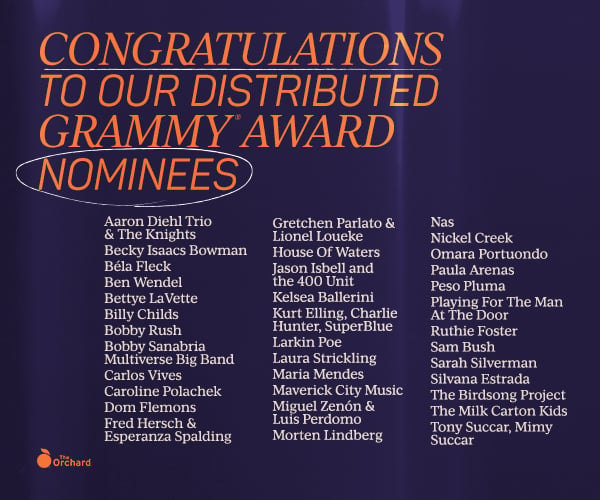Despite the price hikes at music streaming services in recent months, the gap between music and video streaming prices continues to grow.
Even as all the major music streaming services have raised their prices in the past year or so (with Spotify bringing up the rear, and Deezer out ahead with two price hikes), they’ve been outdone by the video streaming services, which have been raising subscription prices much more aggressively.
Among those who’ve hiked prices this year are Disney+, Max (formerly HBO Max) and Paramount+. Now we can add Netflix to the list.
As part of its latest earnings release, the California-headquartered DSP announced Wednesday (October 18) that it’s hiking prices on some of its plans in the US, UK and France.
The Premium plan will now cost $22.99 per month in the US, up $3 from $19.99, an increase of 15%. The Basic plan – which Netflix discontinued earlier this year, but continues to provide to grandfathered subscribers – is going up by $2 to $11.99, an increase of 20%.
Netflix’s lowest-cost option, the ad-supported tier, will remain at $6.99 per month, as will the price for the Standard plan, at $15.49.
In the UK, the Premium plan will rise by GBP £2 to £17.99 (up 12.5%), while the Basic plan will rise by £1 to £7.99 (up 14.3%). In France, the Premium plan is going up by EUR €2 to €19.99 (up 11.1%), while the Basic plan goes up by €2 to €10.99 (up 22.2%). As in the US, ad-free and Standard plans remain at the same price.
Those price hikes are as aggressive as the ones Disney+ announced in August, amounting in many cases to hikes above 20%. They are considerably more aggressive than the 10% price hikes seen for standard individual subscription plans at most of the major streaming services, where the price rose from $9.99/€9.99 to $10.99/€10.99. (All except for Deezer, which has raised its individual subscription price by 20% across two price hikes.)
This means that the gap between video and music streaming prices is growing. At $22.99 in the US, Netflix Premium, which enables streaming on four devices in one household, now costs about 35% more than the $16.99 Spotify Premium Family plan – the closest analogous plan, with six devices per household.
Prior to the price hikes at the two streaming services, Netflix Premium was 25% more expensive than Spotify Premium Family ($19.99 versus $15.99).
(While Spotify’s “Premium” tier refers to any paid subscription, and usually means the individual (one-device) subscription, at Netflix, “Premium” refers to the highest tier service (six devices) while “Standard” refers to a two-device subscription and “Standard with Ads” is the lowest-priced, ad-supported tier.)
“While we mostly paused price increases as we rolled out paid sharing, our overall approach remains the same — a range of prices and plans to meet a wide range of needs, and as we deliver more value to our members, we occasionally ask them to pay a bit more,” Netflix said in its Q3 letter to shareholders.
“Paid sharing” is the term Netflix has adopted for its password-sharing crackdown, which the company launched earlier this year. The move to stop multiple households from sharing a single Netflix account has proven to be a major boost to Netflix subscriber numbers at a time when subscription growth had begun to slow, and at times even reverse: Netflix lost around 1 million subscribers in the first half of 2022.
In Q2 2023, the first quarter of the crackdown, Netflix added 5.9 million new subscribers, well above analysts’ expectations of 2.1 million. Q3 proved to be even stronger, with 8.76 million net new subscribers, the strongest increase in a year, Netflix reported on Wednesday.
“We’re… focused on improving monetization through a combination of paid sharing, scaling our ads business and increased sophistication around our pricing and plans.”
Netflix letter to shareholders, Q3 2023
That beat analysts’ expectations of 5.49 million new subscribers, and was the largest jump in sign-ups since Q2 2020, when Netflix added 10.1 million subscribers amid pandemic restrictions that kept people at home, per CNBC.
Total paid memberships hit 247.15 million, a 10.8% YoY increase.
Revenue jumped by 7.8% YoY, to $8.5 billion in Q3, Netflix reported, while net income came in at $1.67 billion, up 20.1% YoY.
The strong earnings numbers, released after market close Wednesday, caused Netflix stock to soar Thursday morning (October 19). Shares of Netflix were up 16.1% on the Nasdaq exchange as of 10 am ET, trading at $401.80 per share.
The “cancel reaction” to the password sharing crackdown “continues to be low, exceeding our expectations, and borrower households converting into full paying memberships are demonstrating healthy retention,” Netflix said in its shareholder letter. “Going forward, we’ll continue to refine and optimize our approach to convert additional borrower households into either full paying members or extra members over the next several quarters.”
Overall, the company is “focused on improving monetization through a combination of paid sharing, scaling our ads business and increased sophistication around our pricing and plans,” Netflix said.
Those strong results and optimistic plans are why many in the music industry envy Netflix’s position – and increasingly advocate for streaming services to adopt a similar approach, especially when it comes to “sophistication around pricing.”
“I think taking a page out of Netflix’s playbook is a smart thing for all of us to do,” Warner Music Group CEO Robert Kyncl said at Goldman Sachs’ Communacopia + Technology Conference in San Francisco this summer, referring to what he called Netflix’s “price innovation.”
“The amount of work and innovation that happens around price optimization [at] Netflix is incredible,” Kyncl said. “And I think we all have a lot to learn from that, and we should adopt it.”Music Business Worldwide





